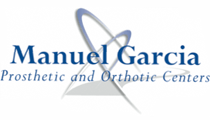Dedicated to quality of life for ALL ages and abilities
Locations in Strongsville and Warrensville Heights, OH
Upper Limb
We are committed to continuously help improve the lives of those who entrust their prosthetic and/or orthotic care to us.
Hours:
There are a variety of hands, hooks, and fingers designed to help people with upper limb loss or limb differences complete everyday tasks. From eating to driving a car, there are different shapes, functionalities, and interfaces designed to help you reach your goals.
Prosthetic hands and hooks can be complex, require power, or be made simply to enable a particular function. From high tech to low tech, they are all designed to provide benefits based on different functional needs and your individual style. Your clinician will evaluate your specific goals and activities and work with you to determine which option is best for you. All prosthetic, orthotic, and pedorthic patients will need to obtain a prescription from their physician (physician notes if required for device) for an orthotic or prosthetic device.
Learn more about each type of technology below:
Mechanical Hands & Hooks
Mechanical hands and hooks use cabling systems and harnessing to use them. they are more proprioceptive and can be used from light duty to extreme heavy duty applications.
Myoelectric Hands & Hooks
Myoelectric hands and hooks use electrodes that detect the electrical impulses within your body to create movement.
Mechanical Hands & Hooks
A mechanical hand does not need to be charged and typically requires you to manipulate it manually before taking action. For example, using your regular hand, you may clench your mechanical hand into a fist and extend your pointer finger to dial a telephone or punch numbers in keypad. That finger can be equipped with a material that interfaces with the touchscreen of a smartphone, so you can browse and use all the functions a smartphone has to offer.
Mechanical hands also have the option to include specific tools that can be removed and affixed to your prosthesis, such as a fork and knife. If your goal is to lift weights, you can even have a hand specifically fabricated to fit the weights you want to lift. Typically, these components are designed to be removable as they enable very specific function and activity.
Mechanical Hooks
Similar to mechanical hands, mechanical hooks can be manipulated and locked into place to support a desired function. Often times, a mechanical hook is made with a strap that goes around your back and attaches to cables that interface with your hook, allowing it to open, close, and clasp. For above-elbow amputees, mechanical hooks are often paired with cable-operated elbows.
This type of a hook is designed to open when flexed one way and clasp when flexed another way. The design can also incorporate a locking mechanism, at open, close, or both. A locked open hook may be useful for times like picking up a cup and taking a drink–the clasp is tight enough to hold, but not so tight as to damage the cup. A locked position is also helpful for eating with utensils and brushing your teeth.
Myoelectric Hands and Hooks
The latest technology in upper limb prosthetics hands and extremities is generally related to myoelectric hands and hooks. Myoelectric devices are those that use electrodes on the residual limb to pick up electrical impulses the body creates when muscles are flexed. Based on the electrical impulses the electrodes detect, the device is programmed to perform a specific action. A myoelectric hand or hook is best suited for people with remaining muscle function in the residual limb in order to generate the proper response from the device. Before the prosthesis is fabricated, muscle function can be tested by placing electrodes on the muscles and ensuring the signal can trigger an action.
Myoelectric devices require training to get familiar with flexing different muscles in order to generate the desired response. However, patience will pay off, as they can create a very functional, life-like experience once you learn to use them.
Pattern Recognition
How it works: Just as your brain learns to coordinate your body movements in infancy, pattern recognition enables bionic prosthetics to restore more natural movement. Using advanced machine-learning algorithms, these system translates muscle signal patterns into an unprecedented level of control in myoelectric devices. This powerful pattern recognition means using a myoelectric upper limb prosthesis becomes more fluid and less cumbersome.
Free Evaluations for Upper Limb Prostheses
Call today to get started.
(440) 243-1085
They are always on top of my needs, flexible with the appointments, and good service.
- William D. via Google
EAST CENTER
4635 Richmond Road
Warrensville Heights, OH 44128
Main: (216) 342-5384
Fax: (440) 243-2543









Share On: